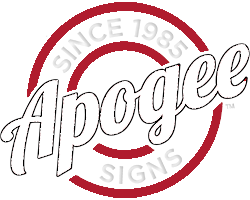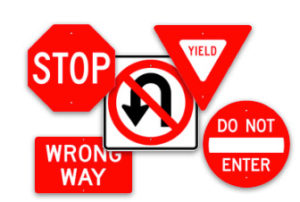 Color is an essential element in creating effective signage. It has the power to attract attention, convey emotions, and influence behavior. Understanding the psychology of color can help businesses communicate their message more effectively through their signage.
Color is an essential element in creating effective signage. It has the power to attract attention, convey emotions, and influence behavior. Understanding the psychology of color can help businesses communicate their message more effectively through their signage.
The Psychology of Color
Color has a significant impact on our emotions, perceptions, and behavior. Different colors evoke different emotions and can influence how we feel about a product, service, or brand. For example, red is associated with passion and energy, while blue is associated with trust and reliability.
According to a study by the Pantone Color Institute, 80% of consumers believe that color increases brand recognition, and 84% believe that color is more important than other design elements when it comes to brand recognition. Another study found that using the right colors in marketing can increase brand recognition by up to 80%.
Choosing the Right Colors
When it comes to choosing colors for signage, it’s important to consider the message you want to convey and the emotions you want to evoke. Here are some common colors and the emotions they typically evoke:
- Red: Passion, energy, excitement, urgency
- Orange: Warmth, friendliness, cheerfulness
- Yellow: Optimism, happiness, clarity
- Green: Growth, balance, harmony
- Blue: Trust, reliability, calmness
- Purple: Creativity, luxury, sophistication
- Pink: Femininity, romance, sweetness
- Black: Elegance, power, sophistication
- White: Purity, cleanliness, simplicity
It’s important to note that different shades and hues of these colors can also evoke different emotions. For example, a bright, bold red can convey excitement and urgency, while a darker, richer red can convey passion and sophistication.
Tips for Using Color in Signage
Here are some tips for using color in signage to effectively communicate your message:
- Choose colors that align with your brand: Your signage should reflect your brand’s personality and values. Choose colors that align with your brand’s identity to create a cohesive visual message.
- Consider the context: Consider the environment in which your signage will be displayed. Will it be in a busy, urban area or a quiet, residential neighborhood? The context can influence the colors you choose and how you use them.
- Use contrasting colors: Contrasting colors can help your signage stand out and be more visible. For example, black text on a white background is a classic combination that is easy to read from a distance.
- Use color to highlight important information: Use color to draw attention to important information on your signage, such as a call to action or a special offer.
- Use color consistently: Use the same colors consistently across all your signage to reinforce your brand’s identity and create a cohesive visual message.
We hope that you have obtained a better understanding of how the psychology of color is essential in creating effective signage that communicates your message and evokes the right emotions. By choosing the right colors, considering the context, and using color consistently, businesses can create signage that stands out, attracts attention, and reinforces their brand’s identity.






